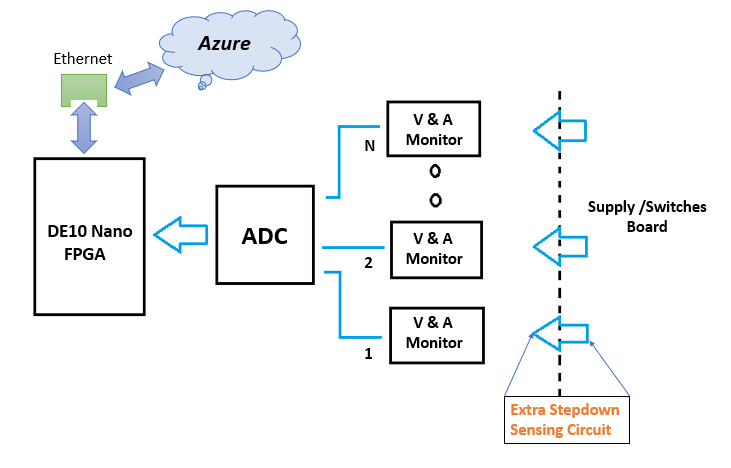Energy and environmental problems are closely related, since it is nearly impossible to produce, transport, or consume energy without significant environmental impact. The environmental problems directly related to energy production and consumption include air pollution, climate change, water pollution, thermal pollution, and solid waste disposal. The emission of air pollutants from fossil fuel combustion is the major cause of urban air pollution. Burning fossil fuels is also the main contributor to the emission of greenhouse gases.
Wasted energy still means that it was produced. Therefore, we burned a ton of fossil fuels for no reason. That means there were both carbon and methane emissions, for electricity that was never even used. As a nation, we are not the most efficient with our appliances, which has a cumulatively negative effect.
Let’s take lights for example. How often have you left the lights on while heading out for the night? I’m sure plenty of times. We’ve all been guilty of leaving the lights on. The problem is that since it is such a common habit, it easily adds up, contributing to the 66.7 percent of wasted energy.
Wasting electricity creates the ultimate domino effect that can one day leave us with a country with insufficient room for all of its citizens.
To solve this issue and problem, the Authors have proposed the idea of Smart Energy Meters. In idea, Smart means it will be an IoT Edge Device connected with Appliances/Switchboards and monitor the consumption at regular intervals. This device will transfer the data from Edge to the cloud for analysis and generate reports for consumption. On the server-side Author will be developing an ML model which will analyze this data and keep giving suggestions to change old devices, alarms while the waste of energy is detected when no one is using, servicing the appliances, etc., all reports and data are available via application at end user as per their requirements and needs.
Project Proposal
1. High-level project introduction and performance expectation
Nowadays energy consumption has increased a lot
Problem:-
Energy and environmental problems are closely related, since it is nearly impossible to produce, transport, or consume energy without significant environmental impact. The environmental problems directly related to energy production and consumption include air pollution, climate change, water pollution, thermal pollution, and solid waste disposal. The emission of air pollutants from fossil fuel combustion is the major cause of urban air pollution. Burning fossil fuels is also the main contributor to the emission of greenhouse gases.
Wasted energy still means that it was produced. Therefore, we burned a ton of fossil fuels for no reason. That means there were both carbon and methane emissions, for electricity that was never even used. As a nation, we are not the most efficient with our appliances, which has a cumulatively negative effect.
Let’s take lights for example. How often have you left the lights on while heading out for the night? I’m sure plenty of times. We’ve all been guilty of leaving the lights on. The problem is that since it is such a common habit, it easily adds up, contributing to the 66.7 percent of wasted energy.
Wasting electricity creates the ultimate domino effect that can one day leave us with a country with insufficient room for all of its citizens.
Idea:- To solve this issue and problem, the Authors have proposed the idea of Smart Energy Meters. In idea, Smart means it will be IoT Edge Device connected with Appliances/Switch boards and monitor the consumption at regular intervals. This device will transfer the data from Edge to the cloud for analysis and generate reports for consumption. On the server-side Author will be developing an ML model which will analyze this data and keep giving suggestions to change old devices, alarms while the waste of energy is detected when no one is using, servicing the appliances, etc., This all reports and data are available via application at end user as per their requirements and needs.
Approach:- To create the proposed system author will be using Terrasic DE10 nano as a computing device and which is connected via ADC (DC1012A-A) as FPGA doesn’t have analog IO functionality. For which ADC will convert the analog reading into digital which will be transferred to Processing Unit for further analysis. For one switchboard one processing unit will be installed and via the different channels of ADC, it will receive data from different sensors, circuits. The V & A monitor (DC1338B) has a voltage sensing limit is 5.5, so the authors will create a supportive circuit to convert/handle the voltage and current sensing at end of the Edge device. Once data is received from the end sensor to the processing unit it will be uploaded on Cloud (Azure) to generate reports, analyze data using ML models, and creating the Visual graph for better representation.
2. Block Diagram

3. Expected sustainability results, projected resource savings
ML model will be responsible for generating
- Visual Graphs for Energy Generation
- Analyze data and Generate reports as per user requirements
- It will suggest the steps to reduce the power consumption for a particular room and particular appliances
- This data will be transferred to a government authority, as most meter reading work will be performed by a manual person or require manual effort.
4. Design Introduction
5. Functional description and implementation
6. Performance metrics, performance to expectation
7. Sustainability results, resource savings achieved
8. Conclusion
0 Comments
Please login to post a comment.